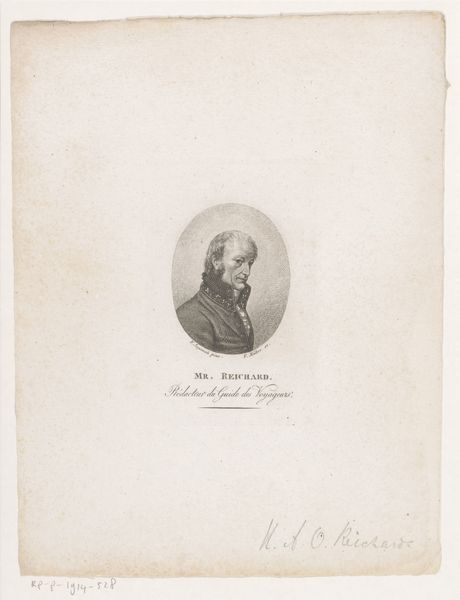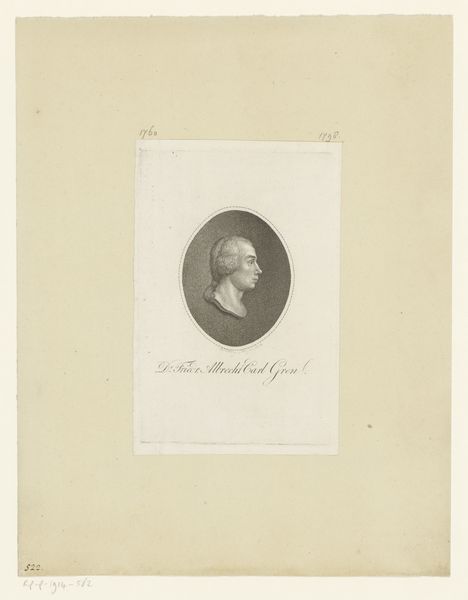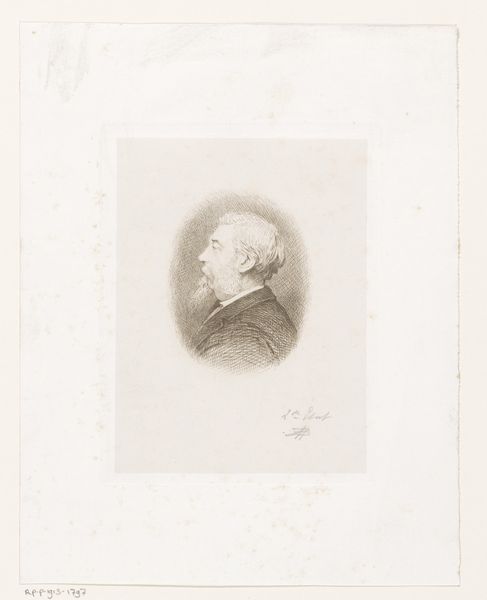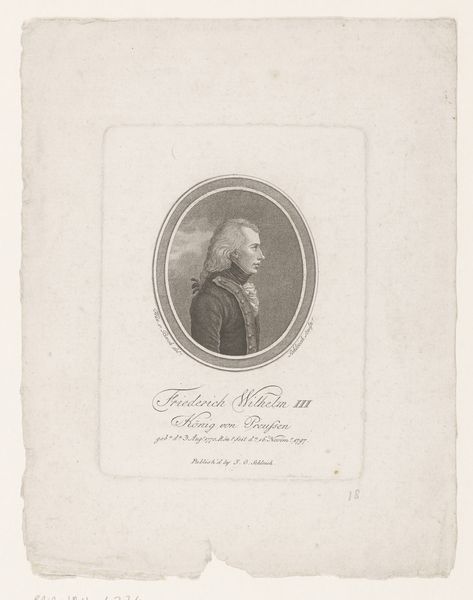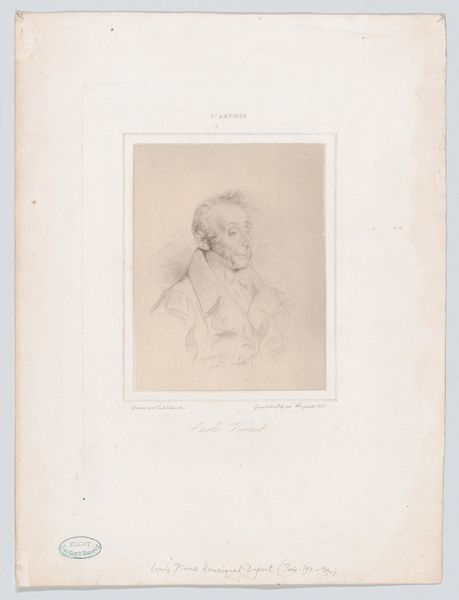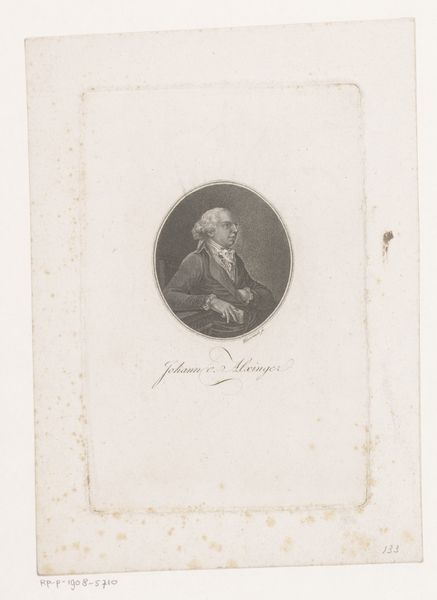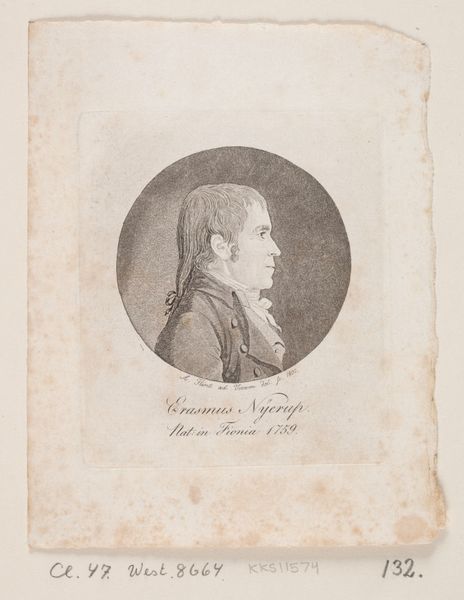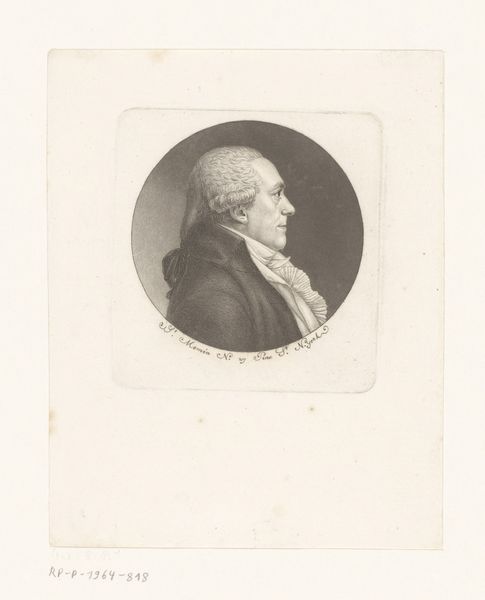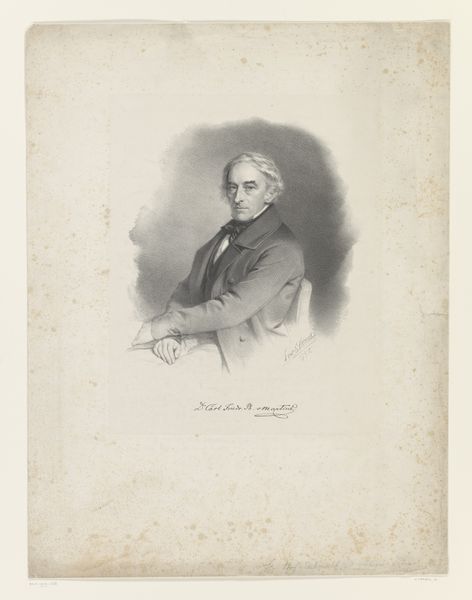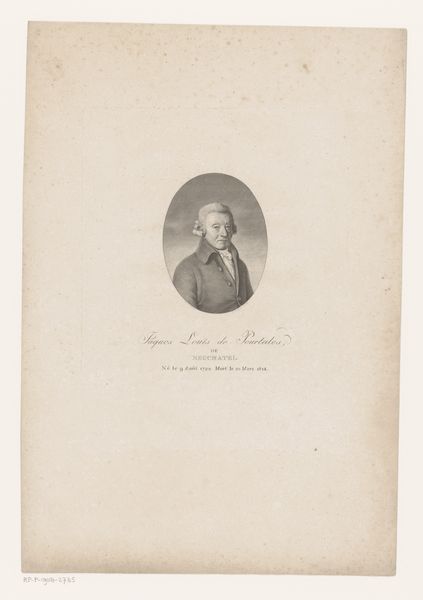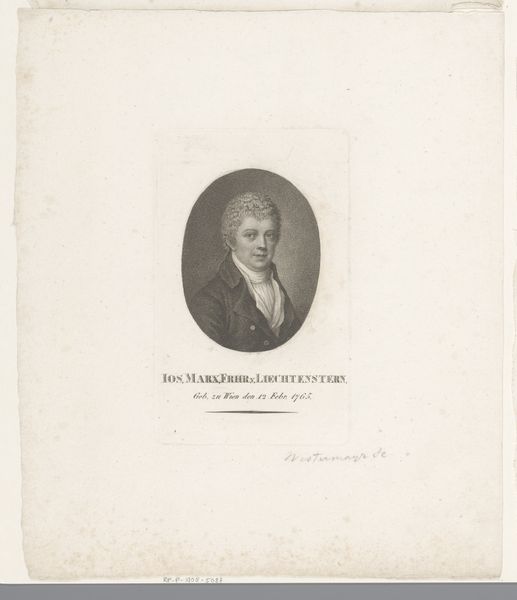
drawing, pencil
#
portrait
#
drawing
#
neoclacissism
#
pencil
Dimensions: height 262 mm, width 180 mm
Copyright: Rijks Museum: Open Domain
Editor: This is a pencil drawing by Nicolas Maurin, made sometime between 1825 and 1842, called "Portret van Pierre Beaumarchais." I find it interesting how neoclassical portraiture immortalizes figures but feels so detached from emotion. What stories do you think it’s trying to tell, and what resonates with you? Curator: Well, observe how this profile emphasizes not just physical features but the ideals Beaumarchais represented: reason, wit, and perhaps a touch of revolutionary spirit. Consider the clean lines and the way the light catches his face, almost god-like. How might this image serve to immortalize, even idealize, Beaumarchais in the eyes of his contemporaries and for posterity? Editor: So, it's not just a likeness but almost a symbol of an era? It feels like the artist wants us to remember him in a specific way, more idea than person. Curator: Precisely. The drawing becomes a visual mnemonic device, embedding him in the cultural memory. The very act of creating this controlled image—the cool, intellectual distance—speaks volumes about the values of the Neoclassical period and its legacy. It raises the question: What aspects of Beaumarchais’ life do you believe Maurin intentionally highlights or omits in this representation? Editor: That’s so true. I never thought about what's intentionally *not* there. Thanks, I definitely look at it differently now. Curator: My pleasure. Seeing art as more than just the immediate image always leads to exciting places, doesn't it?
Comments
No comments
Be the first to comment and join the conversation on the ultimate creative platform.
